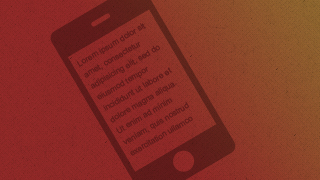Filtering email spam without risk of false positives
Monday, December 17, 2012 at 09:54AM
Tags:
spam,
email,
hosting
Filed in: Website design
Read and add comments (0)

I've had my main email account up and running now for many years and have never had to use an automatic spam filter. I probably get about 5 or 10 spam messages per day which is easily manageable. This article will reveal the straightforward technique I use to keep my inbox spam free.
Dealing with email spam is a daily part of modern life. The usual methods of dealing with it include running a spam filter, either on the email server itself or on your computer.
Although these systems are very advanced there is always the chance that they'll remove legitimate mail.
For that reason many people choose to manually filter their spam as it comes in. That's manageable up to a point, but there will always come a time when it's too time consuming to continue.
This is where you need an active method of avoiding spam - but one that has zero chance of filtering legitimate mail. So how is it done?
It's really simple. Every time you enter your email address into an online form, you create a new and unique forwarder for the business that you're giving your email address. For example, when you create an account with Amazon, use amazon@example.com as your email address (where example.com is your main account domain of course).
Obviously you need to make sure email sent to that address gets to you. However, you don't need to create a new account for each new address you use. You can simply use 'aliases' or 'forwarders'.
Not all email service providers support this feature but a lot do. We use a cPanel email server at Phototropic (for our own email as well as our customer's) and that makes it very easy to create forwarders.
If you have an email control panel, login and look for Forwarders or Aliases. You can then follow the instructions to create a new forwarder. You just need to do that each time you enter a new email address online.
The great thing about this approach is that it instantly reveals who is responsible for selling or spamming your address. Just look at which address the message was sent to. You can then quickly remove that forwarder to stop spam from that source.
The goal with this is basically to only share your real email address with real people who you know and trust.
This approach doesn't completely remove the chance of receiving spam - for example, someone who does know your real email address might get a virus on their computer which harvests their address book contacts.
Despite that though, it is a great way of keeping on top of your inbox and ensures you don't run any risk of filtering your legitimate mail.
You could also take this a step further and turn your main email address into a 'catchall' account so you don't need to create forwarders each time you start using a new alias. This way you can simply block the offending aliases when they start being used for spam. The downside of this approach is it makes it more likely to start receiving spam in the first place as a lot of spam sources send to common email address like info@, admin@ on a given domain name.

 Filtering email spam without risk of false positives
Filtering email spam without risk of false positives Why you don't need a separate mobile website
Why you don't need a separate mobile website Great crested grebe footage used in BBC's Natural World
Great crested grebe footage used in BBC's Natural World Do you need a website as well as social media?
Do you need a website as well as social media? Quick guide to ‘Like-gate’ or ‘Fan-gate’ pages on Facebook
Quick guide to ‘Like-gate’ or ‘Fan-gate’ pages on Facebook 4 Quick Ways to Improve your Website Content Writing
4 Quick Ways to Improve your Website Content Writing Website Design Primer: Common Concepts and Jargon Explained
Website Design Primer: Common Concepts and Jargon Explained New webfilm production: Beer YHA
New webfilm production: Beer YHA New SetSeed powered website design: Antonia Chick Photography
New SetSeed powered website design: Antonia Chick Photography 6 Steps to Improving Search Engine Ranking for Beginners
6 Steps to Improving Search Engine Ranking for Beginners



